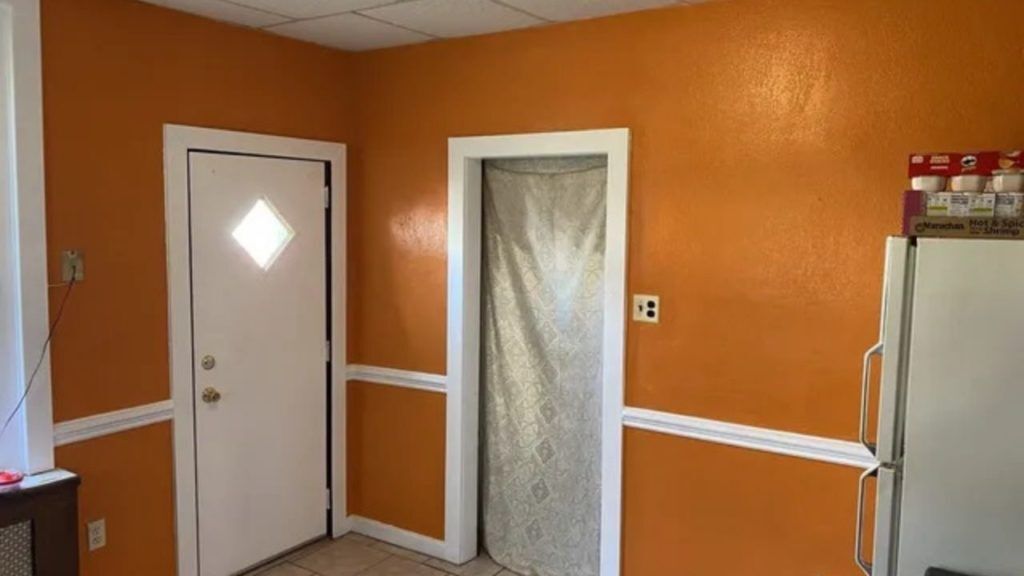House Painter | HOW TO PICK THE RIGHT INTERIOR PAINT COLOR FOR YOUR HOME
Looking to paint your home but unsure which color to choose? Picking the right interior paint color can be a daunting task, but it doesn’t have to be! With a little knowledge and guidance, you can easily find the perfect hue for your space. Here are a few things to keep in mind when choosing an interior paint color:
THE PSYCHOLOGY OF COLOR AND HOW IT CAN AFFECT YOUR MOOD
The psychology of color is the study of how colors can affect our moods and emotions. Colors can be used to create a different atmosphere in a space, and they can affect how we feel in certain situations. For example, cool colors like blue and green can evoke calmness and serenity. On the other hand, warm colors such as red and yellow can be stimulating and energizing.
Color psychology plays an essential role in marketing because it is often used to influence consumers’ decisions about products or services. For example, many fast-food restaurants use red in their logos because red has been linked to increased appetite. Similarly, banks often use blue because it is associated with trustworthiness and reliability. Businesses also consider color when designing websites or ads so that they have maximum impact on viewers.
The psychology of color can also be used to create a certain atmosphere in a room. Bright colors like yellow and orange may make people feel upbeat and energized, while cooler colors like blue and green may give off a calming effect. Different colors can even have an impact on learning; research has shown that students perform better when warmer colors surround them because it helps them to focus more easily.
Overall, the psychology of color is an important concept to consider when designing any environment or marketing campaign. Different colors evoke different emotions and reactions, so it’s important to think carefully about the message that you want to send with your chosen hues. By understanding how colors affect our moods and behavior, we can use color psychology as a tool to create an atmosphere that is conducive to learning, productivity, and even sales.
HOW TO CHOOSE THE RIGHT COLOR FOR YOUR HOME
When it comes to interior paint colors, there are a few things to keep in mind. First, consider the overall feeling you want to create in the space. Are you looking for something calming, energizing, or somewhere in between? Think about how different colors can affect the mood of a room. Cool colors like blues and greens create a calming atmosphere while warm colors such as reds and yellows add energy to a space.
Next, think about the size of your room. Lighter colors can help make smaller spaces feel more open and airy while bolder colors can add depth to larger rooms. Different shades of the same color can also be used to add dimension to any area.
Finally, make sure you keep your furniture and decor in mind when selecting your interior paint color. If you have light-colored furniture it may be best to choose a darker hue on the walls, and vice versa. Also, opt for colors that complement your existing decor instead of clashing with it.
Choosing the right color can be overwhelming but with a few tips, you can find a shade that will bring out the beauty of your home. Remember to consider how different colors affect the mood of a space, take into account the size of the room, and keep in mind your furniture and decor when picking an interior paint color.

PAINTING TIPS TO MAKE THE PROCESS GO MORE SMOOTHLY
When painting the interior of your home, there are a few things you can do to make the process go more smoothly.
First, make sure to choose the right kind of paint. Pick a quality brand that is appropriate for the surface you are painting. Different surfaces require different kinds of paints and primers. For example, if painting a kitchen or bathroom, look for a paint designed specifically for high-moisture areas.
Second, invest in good-quality brushes and rollers. Don’t skimp on this step – it will save you time and headache later on when your tools aren’t up to par and start shedding hairs into your freshly painted wall! Make sure to also purchase drop cloths or tarps so that you can protect furniture and flooring from spills.
Third, plan by taking accurate measurements so you know how much paint you need. If possible, try to buy a few extra gallons just in case you run out mid-project. It’s better to overestimate rather than underestimate when it comes to painting projects!
Finally, make sure to clean up as you go along. Paint spills can be a hassle to remove if left unattended for too long. A wet cloth or sponge should do the trick but be sure not to use excessive water since this could damage your flooring or furniture.
EXAMPLES OF DIFFERENT PAINT COLORS USED IN HOMES
One of the most important decisions when painting a home is choosing the right interior paint color. The color of the paint can set the tone for a room, and it can also affect the overall atmosphere of a home. Here are some examples of different colors used in homes:
-White: White is a classic paint choice for any home and can be used to brighten up dark spaces. It can also be combined with other colors to create an eye-catching, modern look.
-Gray: Gray is one of the most popular paint colors due to its versatility. It pairs well with both warm and cool tones, making it a great choice for all types of rooms. Plus, it has a natural calming effect that can help reduce stress and improve concentration.
-Beige: Beige is a timeless color that looks great in traditional spaces as well as modern ones. It’s neutral enough not to overpower other design elements, but still adds a bit of warmth to any room.
-Yellow: Yellow is a cheerful color that can add energy to any space. It’s best used in moderation and works well as an accent color for a wall or even the trim of an interior door.
-Blue: Blue is another popular choice, especially when it comes to bedrooms. Its calming effect has been proven time and time again, and there are many shades to choose from depending on your desired look.
-Green: Green is perfect for those looking to bring the outdoors into their home. This color can make spaces feel more peaceful while also helping boost creativity. Plus, there are so many different shades of green available, so you can find the perfect hue for your home.
-Red: Red is a bold, dramatic color that can add drama to any space. It works best as an accent color and pairs nicely with deeper shades like navy blue or charcoal gray.
No matter what paint color you choose, make sure it reflects your style and creates the atmosphere you desire in your home. Have fun and experiment with different colors until you find the one that’s just right for you!
HOW TO PICK THE RIGHT PAINT FINISH
When it comes to painting your home, there are many factors to consider to achieve the perfect look. One important decision is choosing the right paint finish. Paint finishes can be divided into three categories: flat, satin, and gloss. Flat paint has a matte finish and is ideal for walls with imperfections as it helps to hide them. Satin paint has a slightly glossy finish and is easy to clean, making it a good choice for areas that get a lot of traffic.
Gloss paint has a high shine and is best suited for trims and doors as it is easy to touch up. When picking a paint finish, it is important to keep in mind the surface you will be painting as well as the desired look. Flat paint is not recommended for areas that get wet as it is difficult to clean, but satin and gloss paints can be used in these areas. Ultimately, the best way to choose the right paint finish is to experiment with samples until you find the perfect one for your home.
A GUIDE TO CHOOSING FURNITURE AND DECOR THAT WILL MATCH YOUR NEW PAINT COLOR
Choosing the right paint color for your home can be a daunting task. But once you’ve found the perfect shade, the real work begins: picking out furniture and decor that will complement your new paint job. Here are a few tips to help you get started.
First, take into account the overall tone of the room. If you’re going for a light and airy feel, look for furniture with clean lines and bright colors. Conversely, if you want the room to feel cozy and inviting, opt for pieces with softer edges and darker hues.
Next, consider the existing style of the room. If it’s already fairly traditional, you’ll probably want to stick with classic furniture styles. But if the room has a more modern vibe, you might mix things up with more contemporary pieces.
Finally, don’t be afraid to experiment! The beauty of decorating is that there are no hard-and-fast rules. So if you find a piece you love but aren’t sure how it will look in the room, go ahead and give it a try. You might just be surprised at how well it works.

CONCLUSION
Now that you understand more about the psychology of color and how it can affect your mood, you are ready to start choosing the right colors for your home. The process of picking out paint colors can be overwhelming, but with these tips in mind, you should be able to narrow down your choices and find the perfect hue for each room in your house. Don’t forget to take into account the other elements in each room when making your final decision- furniture, decor, and natural light all play a role in determining whether or not a certain color will work well. Philadelphia Paint Experts is always here to help if you need an extra set of hands (or eyes) when it comes time to paint your home. We would love to help transform your space into somewhere that truly reflects your personality and makes you happy every time you walk through the door. Give us a call today!

